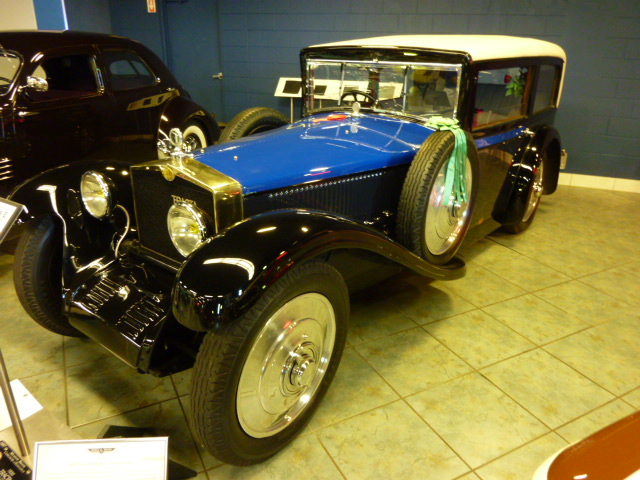"I think the wheels belong as far fore and aft on a car as practical and as looks appropriate, not only for appearance but for what it does. It gives a car a footing, a stance."
This was from an interview by C. Edson Armi in his book "The Art of American Car Design" (p. 239).
Current automobile design roughly follows this concept if the qualifying words "as practical" and "looks appropriate" are strongly emphasized. Certainly the "wide track" placement of wheels close to the sides of a car helps to provide a firmer stance than was the case in Gregorie's Ford days and for many years after. But cars with front-wheel-drive tend to have considerable front overhang due to engine placement. In compensation, they usually don't have excessive rear overhang. This is in contrast to some American rear-wheel-drive cars of the late 1950s and 1960s where front overhang was short, and there was plenty of rear overhang.
Now for some data.
To begin, let's consider the length of a car's overall (both front and rear) overhang expressed as a percentage of its length. For various Chevrolet Impala models, we find the following percentages: 1958, 42.4%; 1971, 45.5%; 1994, 45.9%; 2000, 44.8%; and 2014, 44.5%. During most of the period covered, the overhang / length ratio was fairly steady even though Impalas were rear-wheel-drive until the 2000 model year switch to front-wheel-drive. So, whereas the overall amount of overhang remained fairly constant, rear overhang lessened while front overhang grew.
I might deal with that in a future post. But the subject here is rear overhang, something that became extreme on some cars by the late 1950s. It got so extreme that the affected cars looked unbalanced, probably giving Bob Gregorie fits during many of his Florida semi-retirement years.
To illustrate this quantitatively, I'm using the rear overhang as a percentage of the length. I also include the total overhang / length percentage for a kind of context.
Data are approximate because I took measurements from photographs, and those are potentially subject to lens-based distortion. So the percentages presented below are rounded to the nearest whole percent, and should be regarded as indicative and not precise. The images below are not necessarily the ones I used for measurements; some of those photos were found in my collection of automobile books.
1932 Chevrolet
Total overhang as % of length = 28; rear overhang as % of length = 17.
Bumpers were not counted in car length. This Chevrolet is fairly typical of American cars before streamlining and placement of the back seat ahead of the rear axle became the norm. The numbers are probably very close to the absolute minimum.
1935 Chevrolet Master De Luxe
Total overhang as % of length = 30; rear overhang as % of length = 19.
Bumpers are not counted in car length because they are separated from the car body. Rear overhang and overall overhang increase from the baseline data above.
1941 Pontiac Custom Torpedo
Total overhang as % of length = 38; rear overhang as % of length = 23.
Again, bumpers are not counted in car length. Overhang continues to increase.
1954 Buick Super 4-door sedan
Total overhang as % of length = 39; rear overhang as % of length = 24.
Starting here I include bumpers as part of the length, as they are closely related to the body unlike the tacked-on bumpers of the earlier examples. Rear overhang of this Buick is about the same as that for the '41 Pontiac, but front overhang increased, dropping the wheelbase/ length ratio further.
1958 Buick Limited Riviera 2-door
Total overhang as % of length = 44; rear overhang as % of length = 29.
Here is an extreme example of rear overhang that creates the unbalanced appearance noted above. Rear overhang is about half the length of the wheelbase.
1954 Ford FX-Atmos concept
Total overhang as % of length = 49; rear overhang as % of length = 26.
By the 1950s, some stylists and styling executives were looking at jet fighter planes and science-fiction space ships as inspiration for future (and futuristic) car designs. In design renderings, scale models and even full-size concept cars, wheels were secondary to the overall design, as was the case for Ford's Atmos, shown here. This, and the dream cars shown below, lacked motors. The Atmos' rear overhang was half the length of the wheelbase which, in turn, was half the vehicle's length. We are a long way from the 1932 Chevrolet in the top image.
1955 Chrysler Ghia Gilda concept
Total overhang as % of length = 44; rear overhang as % of length = 25.
Extreme, but not quite as extreme dimensionally as the Atmos.
1964 General Motors Firebird IV concept
Total overhang as % of length = 48; rear overhang as % of length = 23.
Shown at the 1964 New York World's Fair. The statistics are bit iffy due to the camera angle (I couldn't locate a clean side view), but this is probably the most extreme overhang example. The lowest length / wheelbase percentage on a production car that I've calculated so far is 46.7 % for a 1974 Chrysler New Yorker.




















































